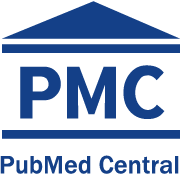Evaluation of an intervention for the use of thromboprophylaxis based on electronic alert transmission to first-year medical residents from two hospitals of Lima, Peru
DOI:
https://doi.org/10.17843/rpmesp.2016.333.2372Keywords:
Thromboprophylaxis, Text messaging, Electronic mail, Practice guidelines, Information technology, MedicalAbstract
Objectives. To assess the implementation of an intervention based on the sending of text messages and e-mails to internal medicine residents in order to achieve an increase in the prescription of thromboprophylaxis according to Clinical Practice Guidelines (CPG). Materials and methods. A quasi-experimental study was conducted in the inpatient units of internal medicine at two general hospitals in Lima, Peru: one selected to implement the intervention and the other as control. The unit of analysis was the therapeutic order sheet. It was considered that the intervention should increase the order of thromboprophylaxis according to CPG with respect to the initial assessment and also in relation to the control hospital. Results. A total of 394 therapeutic order sheets, 227 (57.4%) from the intervention hospital and 167 (42.4%) from the control, were evaluated. In the intervention hospital, 64.5% initially had an order of thromboprophylaxis according to CPG, which decreased to 54.4% after the intervention; overuse increased from 13.6 to 26.8%. Conclusions. Intervention based on sending text messages and e-mails had no impact, showing a tendency to overuse of thromboprophylaxis post-intervention.Downloads
Download data is not yet available.
Downloads
Published
2016-09-01
Issue
Section
Original Article
How to Cite
1.
Delgado-Zapata R, Ticse R, Gamarra M de los Ángeles, Gómez K, Mormontoy W. Evaluation of an intervention for the use of thromboprophylaxis based on electronic alert transmission to first-year medical residents from two hospitals of Lima, Peru. Rev Peru Med Exp Salud Publica [Internet]. 2016 Sep. 1 [cited 2025 May 11];33(3):498-506. Available from: https://rpmesp.ins.gob.pe/index.php/rpmesp/article/view/2372





























